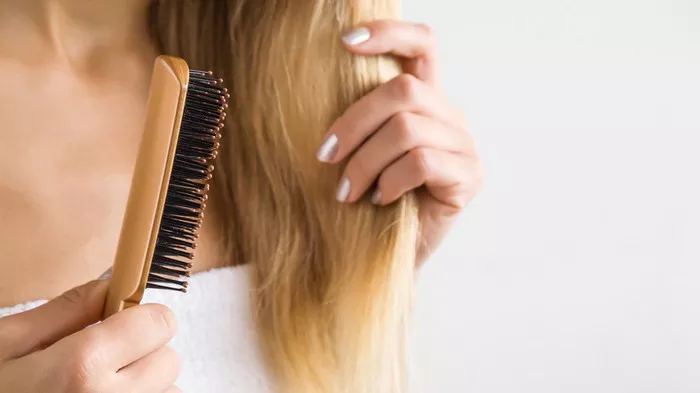Hair loss, particularly at the crown of the head, can be a distressing issue that affects both men and women. If you’re experiencing hair loss in this area, you’re not alone. In this comprehensive guide, we will explore effective strategies to help you prevent and reverse hair loss from the crown.
What is hair loss on top of head?
Hair loss on the top of the head, often referred to as crown hair loss or vertex baldness, is a common condition characterized by the thinning or receding of hair in the central region of the scalp. It’s typically associated with male and female pattern baldness, known as androgenetic alopecia, which is influenced by genetic factors and hormonal imbalances. In this condition, hair follicles in the crown area become progressively miniaturized and produce thinner, shorter hairs, eventually leading to baldness. Crown hair loss can impact self-esteem and appearance, prompting individuals to seek various treatments and solutions to address and potentially reverse the condition.
Understanding the Causes of Crown Hair Loss
Before we dive into the solutions, it’s essential to understand the underlying causes of crown hair loss. Several factors can contribute to this issue:
1. Genetics
Hereditary Factors: Crown hair loss, often referred to as male or female pattern baldness, can be genetically inherited. If your family has a history of crown hair loss, you may be predisposed to it.
2. Hormonal Imbalances
Dihydrotestosterone (DHT): An imbalance of DHT, a hormone derived from testosterone, can contribute to hair loss at the crown. DHT shrinks hair follicles, making them unable to produce healthy hair.
Thyroid Disorders: Imbalances in thyroid hormones can also lead to hair loss, including thinning at the crown.
3. Poor Scalp Health
Follicle Clogging: A buildup of sebum, dirt, and dead skin cells on the scalp can clog hair follicles, inhibiting hair growth.
Inflammation: Chronic inflammation of the scalp can damage hair follicles and impede hair growth.
Now that we’ve examined the root causes, let’s explore the steps you can take to prevent and reverse crown hair loss.
Preventing and Reversing Crown Hair Loss
Here’s how to prevent and reverse hair loss on the top of your head:
1. Nourish Your Body with a Balanced Diet
Essential Nutrients: Ensure your diet includes essential nutrients like biotin, vitamins (A, C, D, E), and minerals (iron, zinc) that support hair growth and overall scalp health.
Protein: Incorporate protein-rich foods like lean meats, eggs, and legumes to provide the building blocks for strong, healthy hair.
2. Explore Hair Growth Supplements
Biotin Supplements: Biotin supplements may help strengthen hair and promote growth, particularly in cases of biotin deficiency.
Multivitamins: Consider multivitamin supplements designed to support hair health, but consult a healthcare professional before starting any new supplement regimen.
3. Topical Treatments
Minoxidil: Over-the-counter minoxidil treatments can stimulate hair growth and slow down crown hair loss. Apply it directly to the affected area as directed.
Prescription Medications: Consult a dermatologist to discuss prescription medications like finasteride, which can inhibit DHT production and promote hair growth.
4. Scalp Care
Regular Cleansing: Use a gentle, sulfate-free shampoo to keep your scalp clean and prevent follicle clogging. Avoid excessive washing, which can strip the scalp of natural oils.
Scalp Massages: Regularly massage your scalp to improve blood circulation and promote hair growth. You can use essential oils like rosemary or lavender for added benefits.
5. Low-Level Laser Therapy (LLLT)
Laser Combs or Helmets: LLLT devices use low-level lasers to stimulate hair follicles and promote hair regrowth. These can be used at home or administered in clinical settings.
6. Hair Transplant Surgery
Follicular Unit Transplantation (FUT) or Follicular Unit Extraction (FUE): Consider hair transplant surgery for more severe cases of crown hair loss. This surgical procedure involves transplanting healthy hair follicles to the balding area.
Consultation: Consult with a reputable hair transplant specialist to determine the most suitable technique for your specific needs.
See Also: How to Stop Hair Loss from Antibiotics: What You Need To Know
Conclusion
Crown hair loss can be a challenging issue, but with the right approach, it’s possible to prevent and even reverse it. Start by understanding the root causes, which may include genetics, hormonal imbalances, and scalp health. From there, you can take proactive steps such as maintaining a balanced diet rich in essential nutrients, exploring supplements, using topical treatments, practicing good scalp hygiene, considering low-level laser therapy or hair transplant surgery as needed.


